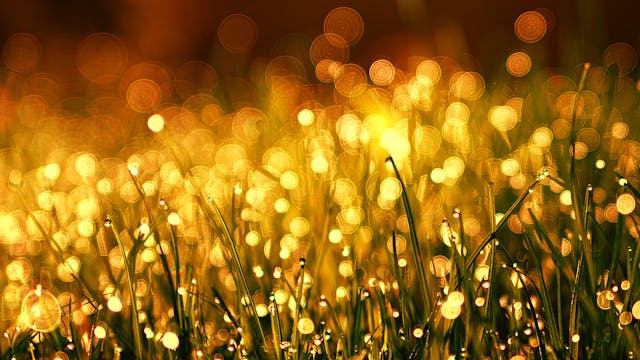Bokeh is one of the most beloved effects in photography, often creating stunning images with beautiful background blur.
If you would ask a photographer, they would say that a larger sensor is necessary for beautiful bokeh. It is also one of the reasons why full-frame cameras are the go-to option for professional work.
Until now, there is a belief that larger sensors are necessary for bokeh. But is it? Or are there other factors that could affect background blur as well?

What is Bokeh?
Bokeh (pronounced boh-kay, while some say it as boh-keh) refers to the aesthetic quality of the blur produced in the out-of-focus parts of an image.
Derived from the Japanese word "boke," meaning blur or haze, bokeh emphasizes the pleasing or artistic quality of the background blur, making the subject stand out.
Bokeh is often seen in portrait photography, macro shots, and even some landscape photography. It is a distinct characteristic that isolates the subject from the background.

Do You Need a Large Sensor Camera for Bokeh?
A common belief is that large sensor cameras are necessary to achieve beautiful bokeh.
While it is true that larger sensors can make it easier to create a shallow depth of field, resulting in more pronounced bokeh, it is not the only way to achieve this effect.
Basically, larger sensors have the advantage of gathering more light and providing a wider field of view, which allows photographers to use larger apertures and get closer to their subjects.
This combination of a wide aperture and close subject distance enhances the background blur, making bokeh more noticeable.
However, modern advancements in lens technology and camera capabilities mean that even small sensor cameras can produce impressive bokeh with the right techniques.
Yes, that means, crop sensor cameras and micro-4/3 cameras are capable of producing creamy and aesthetic bokeh. It all boils down to the technique used to make the bokeh more pronounced.

How to Achieve Bokeh with a Small Sensor?
Use a Fast Lens
A lens with a wide maximum aperture (like f/1.8 or f/2.8) allows more light into the camera, helping to create a shallow depth of field.
Many compact cameras and smartphones now offer lenses with large apertures.
Beginner photographers often have kit lenses with an aperture range of f3.5-5.6. Thus, the next step is to get a nifty-fifty or 50mm lens with an f/1.8 aperture and the road to exploring bokeh begins.
Get Close to Your Subject
The closer you are to your subject, the more pronounced the background blur will be. This technique works well for portrait photography and macro shots.
Like the example above, if you have a kit lens with an f/3.5 aperture, you can go ahead and move closer to you subject to emphasize it over the background.
Increase the Distance Between Subject and Background
The farther your subject is from the background, the more out of focus the background will be. This increased distance enhances the bokeh effect. This technique is applicable if you have a lot of room to work with.
Use a longer focal length
Focal length also plays a huge role in producing bokeh. Longer telephoto lenses compresses the background giving better subject-background separation.
Lenses that are 70mm or higher has a shallower depth-of-field and they tend to produce more visible bokeh.
Combine the longer focal length with a large aperture and you'll get excellent results.
Now, what if you only have a kit lens such as the Canon 18-55mm f/3.5-5.6?
Try to put it into 55mm and max it out at f/5.6. Try to move your subject away from your background and get close as much as possible.
Basically, combine all the previous techniques mentioned to achieve better bokeh.
Use Portrait Mode
Many modern cameras and smartphones have a portrait mode specifically designed to simulate bokeh by using software to blur the background while keeping the subject in sharp focus.
No, it is not the "P" mode seen on your camera mode dial. However, some entry level cameras have an person icon and that is usually the portrait mode.
This way, the camera will determine the right settings to give you better bokeh.
Mobile photography users have it easier since the in-camera portrait mode will detect the subjects face and blur the background. However, this feature is sometimes hit or miss.
Experiment with Backgrounds
Busy or textured backgrounds can enhance the appearance of bokeh. Lights, foliage, or other detailed elements in the background will create more interesting blur patterns.
Try to avoid plain backgrounds such as walls since it will look bland and boring. The output will be a plain looking slab of color without any characteristics.

Final Thoughts: Are large sensors necessary for bokeh?
While large sensor cameras do have an advantage in achieving pronounced bokeh, they are not a necessity.
By understanding and utilizing techniques such as using a fast lens, getting close to your subject, focal length selection, increasing the distance between the subject and background, and experimenting with portrait modes, you can achieve beautiful bokeh even with a small sensor camera.
So, don't feel limited by your equipment—focus on your creativity and the techniques that can help you create stunning images with lovely bokeh.

